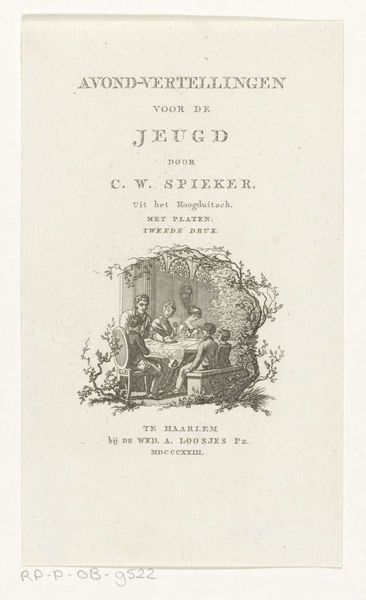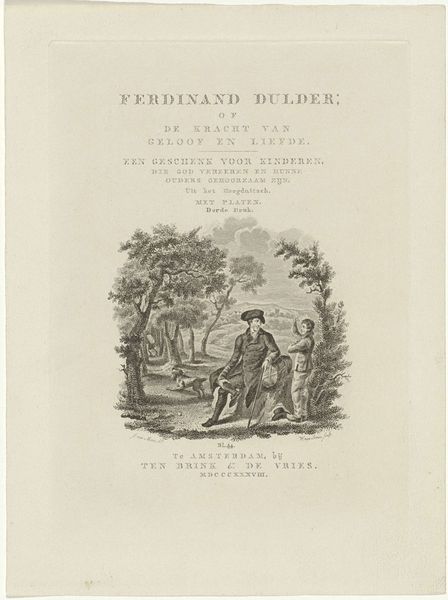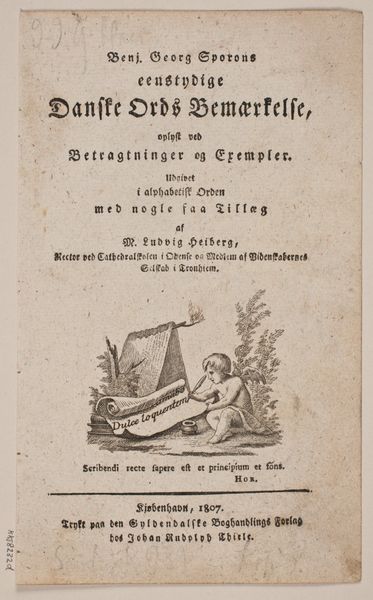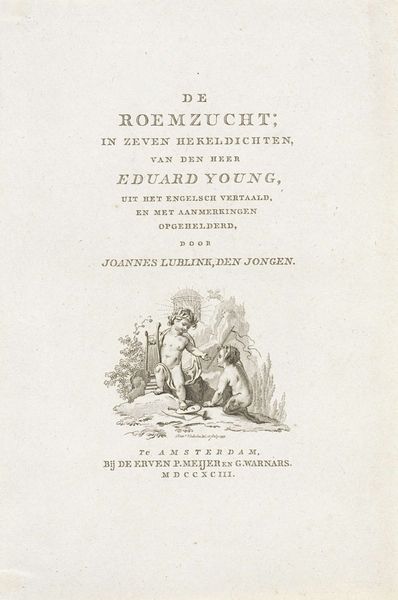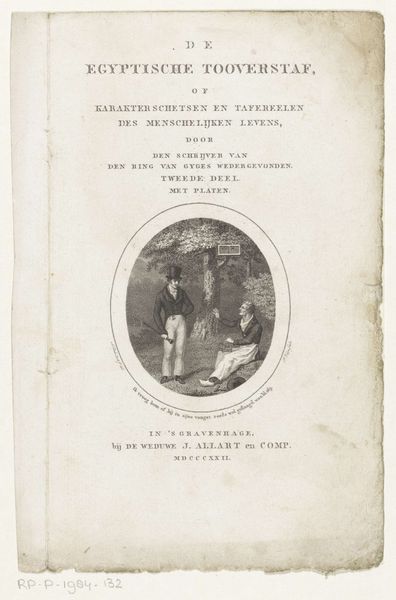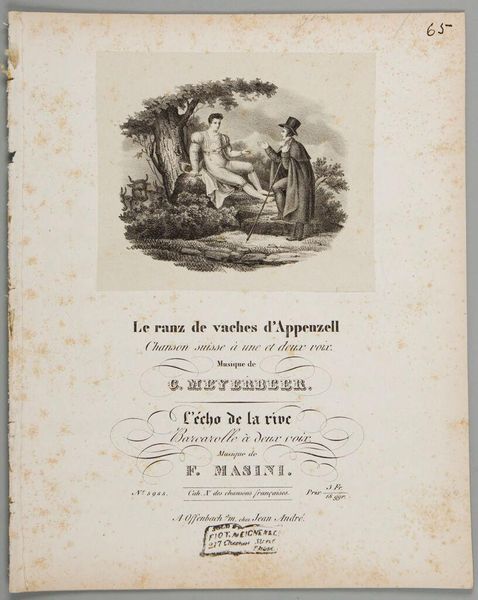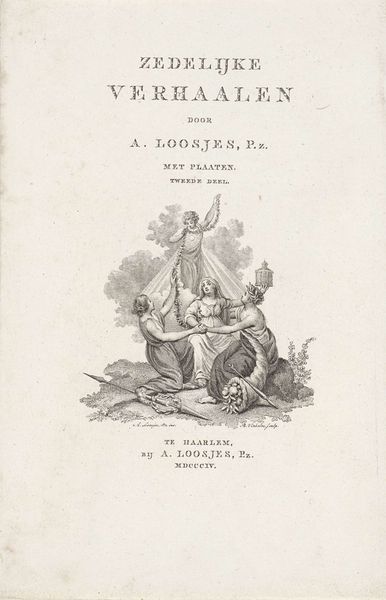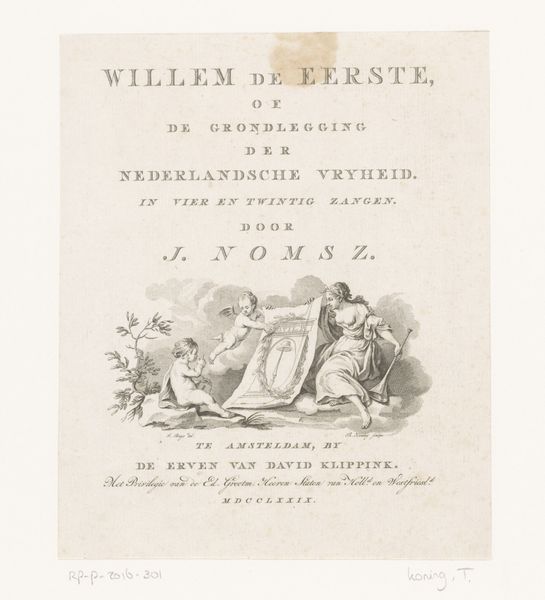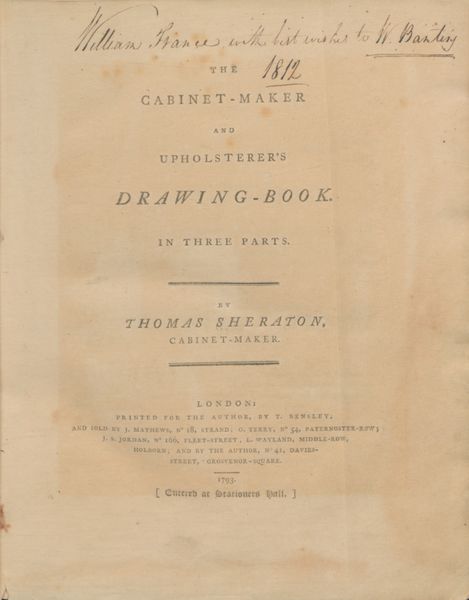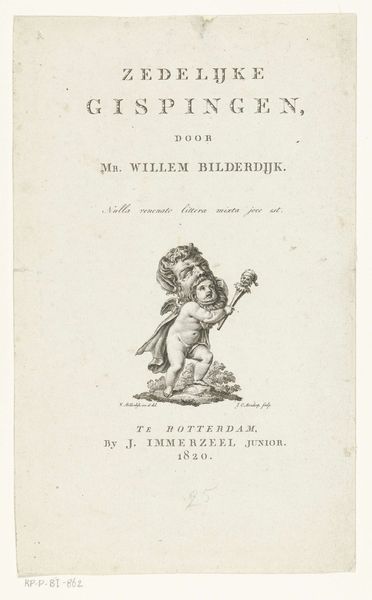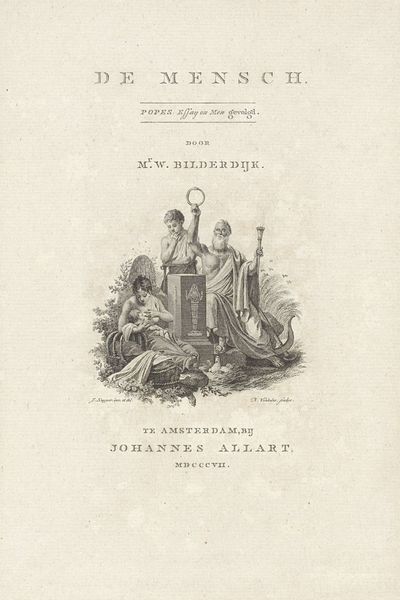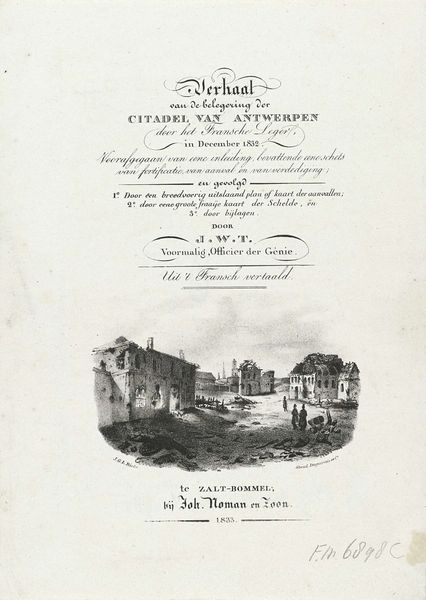
print, engraving
#
portrait
#
neoclacissism
#
aged paper
#
allegory
#
dutch-golden-age
# print
#
book
#
old engraving style
#
figuration
#
personal sketchbook
#
child
#
engraving
#
miniature
Dimensions: height 193 mm, width 127 mm
Copyright: Rijks Museum: Open Domain
Curator: Let's consider this engraving from 1823; it's the title page for "Het Nederlandsch AB-Boek," or "The Dutch Alphabet Book." Editor: My immediate reaction is that it's an orderly composition. The text is carefully placed above an allegorical scene. Curator: Indeed. This piece reflects Neoclassical sensibilities, aligning with a time of renewed interest in order and reason. The book was designed to educate young people about Dutch history and culture. We must remember, this was not long after the Napoleonic era and during a time of nation-building in the Netherlands. Editor: Absolutely, and the use of engraving lends itself to a clear, linear quality. The allegorical figure seated at the right exudes classical composure, while the children actively engage with maps and books. Look at the detail in the drapery and the crispness of the lines. It speaks of control. Curator: Those children signify the future, learning the landmarks and histories of the nation—a carefully curated national narrative to instill pride and belonging. It’s fascinating how early educational materials helped to shape Dutch identity. Editor: I agree; everything points to a carefully structured visual message. The lion beside the central female figure, an allegorical personification of the Dutch nation perhaps, it looks pensive. This brings an element of national strength and resolve. The balance within the image is just beautiful, a testament to visual harmony. Curator: And consider the historical context: prints like this, intended for children's primers, often reinforced social hierarchies and colonial narratives prevalent at the time, which we can understand using contemporary theories of power. Editor: You make an excellent point, especially thinking about how we, as an audience, interpret symbolism such as this today. Thanks for shining new light on that for me. Curator: Of course. Engaging with these historical objects challenges us to reconcile our understanding of the past and our commitments in the present. Editor: And seeing this old engraving truly enriches my perception.
Comments
No comments
Be the first to comment and join the conversation on the ultimate creative platform.
